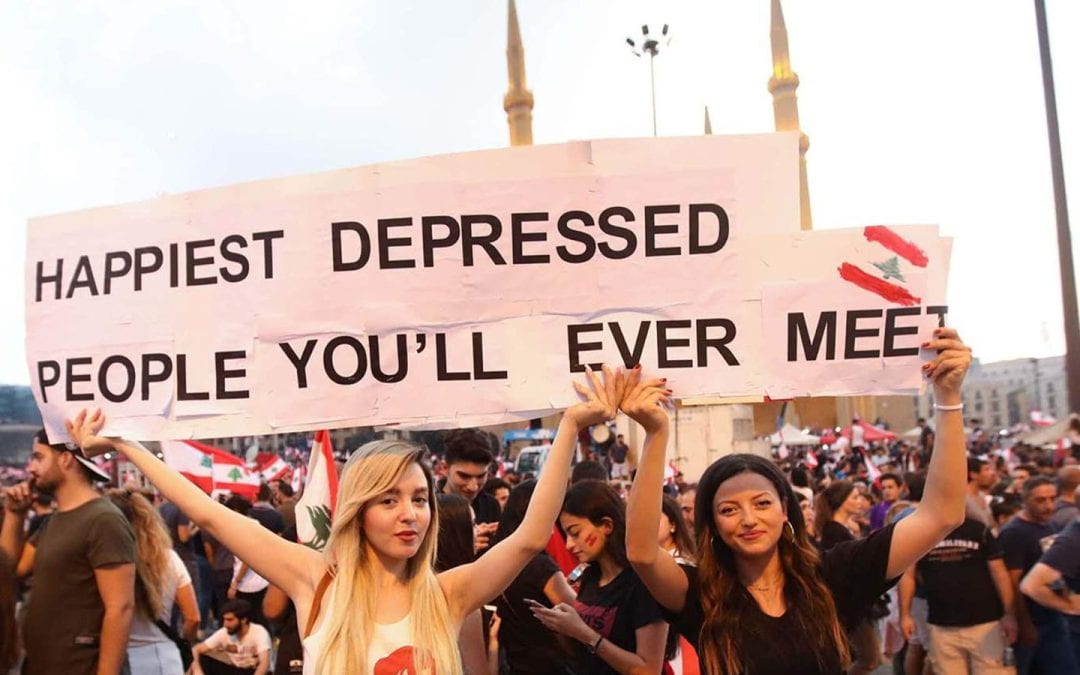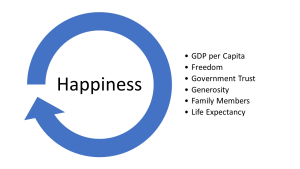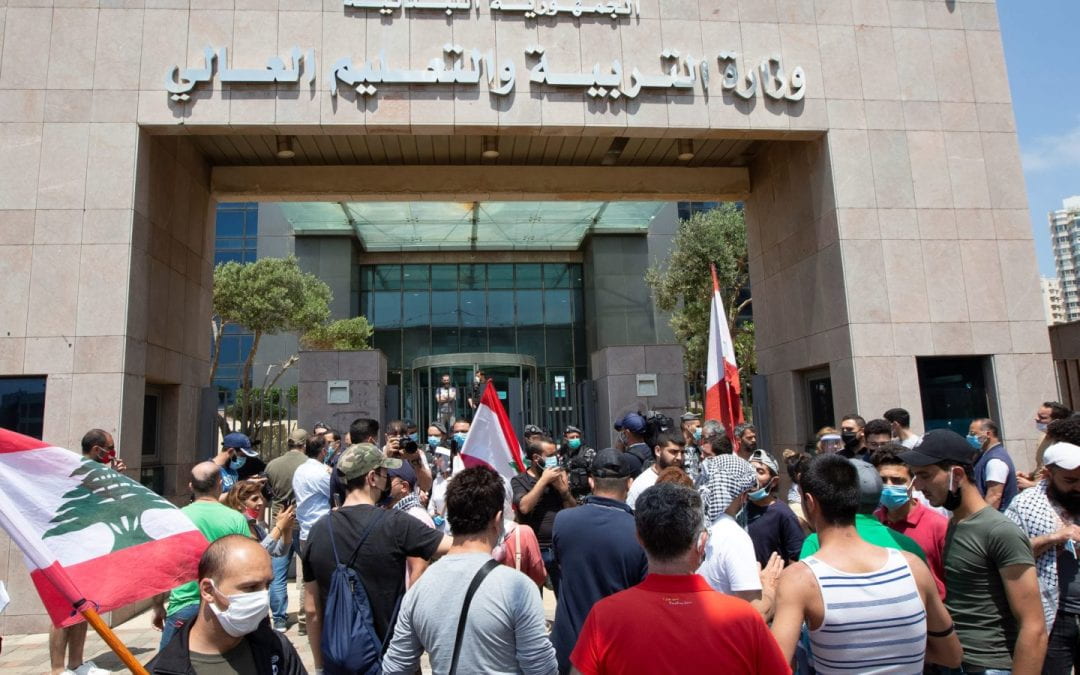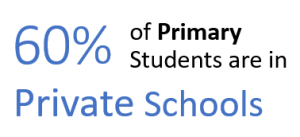
Decoding Happiness: Uncovering Challenges and Proposing Solutions in Lebanon
Being in a state of happiness is a complicated and diverse mental and emotional condition that involves feeling content, pleased, and fulfilled with one’s life. It is a crucial part of being human and has been a topic of study in philosophy, psychology, and science for many years. The pursuit of happiness is a universal human goal that goes beyond cultural, geographic, and socioeconomic limitations. Yet, happiness remains highly subjective, varying from person to person based on individual and environmental factors. The question arises: Can we quantify this elusive emotion? Is it possible to measure happiness across a population, identify challenges, and propose solutions for the collective well-being?
Decoding the Happiness Index:
Acknowledging the significance of happiness, the United Nations Sustainable Development Solutions Network introduced the World Happiness Report in 2012. This report unveils the Happiness Index, a ranking system that delves into the well-being of nations. Factors such as income, social support, life expectancy, freedom of choice, generosity, and perceptions of corruption contribute to this comprehensive measure.
Unveiling Happiness Pillars:
The United Nations Sustainable Development Solutions Network not only standardized happiness measures, it also standardized factors that contribute to it, where it defined the following factors as Happiness Pillars: Income, Social Support, Life Expectancy, Freedom to Choose, Generosity and Corruption Index. Considering income, though money doesn’t guarantee happiness, it though plays a role by providing better access to resources, opportunities, and an enhanced standard of living. Social support is emphasized, with human connections forming the fabric of happiness, contributing to a sense of belonging, security, and resilience. Life expectancy is viewed not just as a statistic but as a reflection of access to quality healthcare, living conditions, and overall well-being. Freedom to choose is highlighted, emphasizing that autonomy and the ability to make personal choices directly impact one’s sense of well-being. Generosity is underscored as acts of kindness and generosity foster happiness, creating a positive cycle, especially in societies that prioritize giving. Additionally, the Corruption Index reveals that lower levels of corruption correlate with higher reported levels of happiness, as trust in institutions and a better quality of life go hand in hand.

Lebanon’s Economic Crisis: Impact on Happiness
Lebanon is currently facing a severe economic crisis with soaring debt and dwindling foreign reserves. Unemployment, currency devaluation, and economic instability have triggered widespread stress and declining standards of living. The aftermath ripples through social and political unrest, plunging Lebanon’s happiness index to its lowest.
.
In 2022 and 2023, Lebanon ranked as the least happy in the MENA region, with a Happiness Index of 2.392. Globally, it stood at 136th out of 137 countries in 2023, highlighting a stark decline. CNN reports that life evaluations in Lebanon lag more than 5 points behind the top 10 happiest nations.
Deepening into Lebanon’s Happiness: Understanding Declines and Designing Solutions
A comprehensive approach to take would be to evaluate the key indicators affecting the happiness index in Lebanon and its decline throughout the years. After which, a framework of policies will be designed to improve the overall happiness and well-being of the Lebanese population.
Verdict: GDP at the forefront of Lebanese well-being:
As the bar chart shows, GDP is perceived to be the main factor that would contribute to the Lebanese happiness score. This means that for the year 2023, the Lebanese population expressed that the economic situation around them is a major contributor to their happiness levels. Since GDP is the main player contributing to the happiness level of the Lebanese population, further analysis should be conducted.
Lebanon’s GDP Over the Years:
In 2018, Lebanon enjoyed an economic height of 55B $. However, the economic crisis in 2019 forced Lebanon into a rapid decline, reaching 23B $ by 2021—a 50% reduction in just 2 years. This economic state is concerning, as GDP takes center stage in Lebanon’s happiness index. The focus now turns to dissecting the factors driving this downturn, an essential step in understanding and rectifying the low happiness score in the country.
Improving happiness in Lebanon: Increase GDP as a main Target:
Understanding Lebanon’s economic health involves looking at the Gross Domestic Product (GDP) formula. GDP, a measure of a country’s economic output, is calculated through an expenditure approach:
GDP = Consumption (C) + Investment (I) + Government Spending (G) + Net Exports (NX)
Net Exports: A nation’s exports minus its imports.
Investment: Business expenditures by businesses and home purchases by households.
Consumption: Private consumption expenditures by households and nonprofit organizations.
Government Spending: The expenditures spent by the government on goods and services in different sectors.
Analyzing Consumption, Investment, Government Spending, and Net Exports individually, helps identify what factors contribute to the country’s declining GDP.
The C and NX in GDP – Consumption & Net Exports:
Starting with Consumption, a noticeable dip occurred in 2019 due to government-subsidized policies cutting prices for essentials like fuel and food. However, as these policies relaxed, prices inflated, and by 2023, consumption levels rebounded to normal.
Shifting gears to the Net Exports (Exports – Imports), its line chart shows an increasing trend since 2019. This is explained by the economic crisis that took place that year, where due to the currency devaluation, it became much more costly for people to import products/services from foreign countries. Furthermore, the heightened inflation encouraged the Lebanese people and the government to export goods and services, for the sake of the Dollar Currency acquisition.
In summary, both Net Exports and Consumption show improvement over time, contradicting the overall GDP decline. This suggests that focusing on these factors might not be the key to improving Lebanon’s GDP, redirecting our attention to other aspects of the economic equation.
The I and G in GDP – Private Investment and Government Spending:
The line chart depicting Private Investments reveals a downward trend since 2019. The economic crisis of that year, coupled with banking restrictions on loans and economic uncertainties, forced a drop in investments from $48 Billion in 2019 to $28 Billion in 2021.
Shifting gears to Government Spending, the scenario is equally grim. The economic and banking crises of 2019 left the government strapped for funds, unable to secure a budget for essential services. Defaulting on Euro Bonds further restricted financial options, leading to a drastic cut in government expenditures from $16 Billion in 2019 to a mere $2 Billion in 2021.
In summary, ‘Private Investment’ and ‘Government Spending’ are the factors contributing to Lebanon’s GDP decline. To reverse the GDP slump and foster happiness, targeted policies must address these crucial aspects, attracting investments and revitalizing government spending.
What to Keep in Mind when Dealing with Lebanon’s Happiness:
- Happiness among the Lebanese population is primarily explained by GDP.
- Examining changes in GDP’s four pillars, showed the following:
Consumption has shown consistent stability over the years.
Net Exports have demonstrated a positive trend in recent years.
Government Spending and Investment, however, have significantly decreased, notably beginning with the onset of the economic crisis in 2019. - Government Spending and Investment are the primary factors responsible for the decline in Lebanon’s GDP. Addressing these aspects is crucial to enhance the overall happiness index in the country.
- Even though Net Exports are experiencing a positive increasing trend, the values are still negative. Introducing certain reforms can help in pushing that value closer to zero or possibly turn the Lebanese trade deficit into a trade surplus.
To achieve the mentioned improvements, specific reforms need to be implemented. Recommendations and solutions will be discussed in detail in the Solutions segment.
Addressing the Core Problem: Solutions to Lebanon’s Decreasing GDP
Improving the I in GDP – Private Investment:
With our primary aim being fostering economic growth and increasing Gross Domestic Product, attracting Foreign Direct Investments (FDI) is a must. This can be achieved through regulations that would create a more attractive environment for investors.
Increasing and Regulating the G in GDP – Government Spending:
Lebanon is already receiving aid and funds from various countries such as the gulf countries. Leveraging these funds and properly utilizing them is essential in addressing key economic challenges faced by Lebanon. Important sectors that the Lebanese government can invest these funds into include but are not limited to:
Focal Point 1 – The Lebanese Health Sectors:
Improving Lebanon’s health sector should be a priority for the government. This can be achieved through policies that would emphasize the production of locally made generic medicine, the renovation of public hospitals, and the Expansion of healthcare services for the elderly and people in remote areas of the country.
Furthermore, government-funded programs for healthcare workers can be introduced alongside a robust awareness campaign to touch on key public health notions such as preventive measures, the importance of seeking medical attention when needed, and healthy living practices.
Focal Point 2 – The Lebanese Educational Sector:
To improve the education sector, the government could focus on renovating public schools to ensure that they are equipped with the proper technological tools and learning resources and materials to enhance the overall learning experience.
In addition, increase funding for improvement of the Lebanese University through enhanced administrative processes, and investment in infrastructure upgrades.
In parallel, government funded programs for teachers and career guidance initiatives should be put in place to both train educators on the use of modern pedagogical methods as well as provide students with the information about various career paths they could undertake.
Focal Point 3 – The Lebanese Infrastructure:
Another key area to focus on is the current state of infrastructure in Lebanon. The government, in its expenditure plan, should focus on maintaining and expanding the various infrastructure that would attract factories into the country. In addition, industrial zones with certain benefits to factories could be built in an attempt to increase their local presence. Finally, the government should implement a transparent bidding process for Public Work Projects that would ensure a fair allocation of resources dedicated to maintain, and construct new infrastructure.
Improving the NX in GDP – Net Exports:
Improving Net Exports in Lebanon could be achieved through a classical protectionist trade policy. This policy aims to boost the domestic economy by increasing tariffs on imports, making imported goods more expensive and locally-produced goods more competitive which shifts consumer demand towards domestic products. As a result, Net Export in Lebanon will increase due to less imports, and more competitive local products that could be exported globally.
A Measure that Ties it All Up – Enhancing Transparency and Accountability:
Ensuring transparency and accountability is essential when implementing fiscal policies as it involves safeguarding the independence of auditing bodies like the Central Inspection. This institution is responsible for addressing inefficiencies and uncovering any financial mismanagement.
In addition and to further expand transparency, a national bureau of statistics for accessible economic data can be established to empower and inform the Lebanese people about the current state of their economy.
Implementing these government reforms do not only contribute to an increase in GDP. They also serve in improving the trust people have in their government, which is another factor that directly contributes to the overall Happiness Index. (Government Trust).
A Proof of Success and a Model to Follow – Singapore:
Singapore, a small country in Asia, was exposed to several regional economic crises. However, through robust fiscal policies implemented in the 1960s, Singapore maintained its growth and positioned itself as the happiest country in Asia.
Therefore, following Singapore’s steps in emphasizing financial management and sector-specific investments would not only recover Lebanon’s GDP, but consequently improve the happiness of its citizens.
Conclusion – Lebanon’s Path to Happiness:
The Lebanese population expressed that the economic situation around them is a major contributor to their low happiness levels. To revive the economy, largely affected by the 2019 financial crisis, targeted reforms including increased Foreign Direct Investments, efficient fund allocation, and a protective trade policy should be implemented.
As GDP positively influences other happiness index components such as Life Expectancy and Government Trust, increasing it would result in an overall higher Happiness Score. Thus, a concerted effort towards GDP enhancement through focused reforms is not only a remedy for the economic downturn but a pathway to a happier and more prosperous Lebanon.


